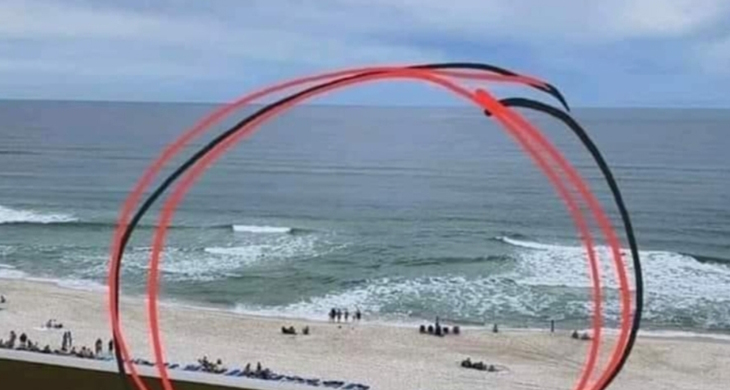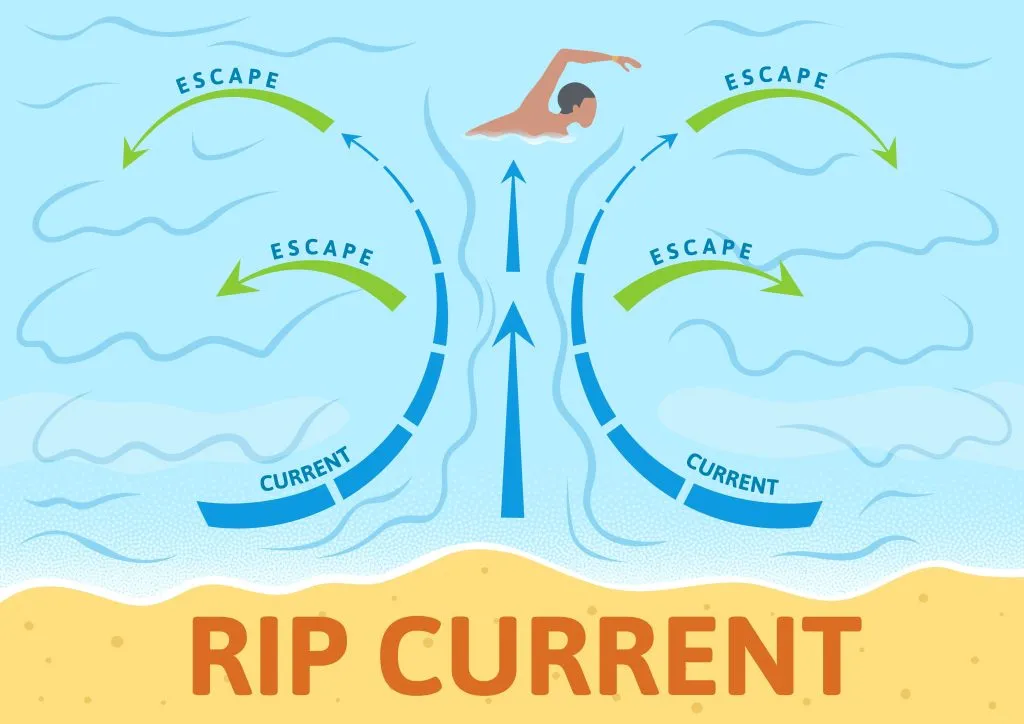Here’s the reason why you should avoid entering the sea in this area if you notice currents forming in this manner.

Understanding Rip Currents: How to Stay Safe at the Beach
Many people lack knowledge about ocean regulations and the dynamics of the sea, which can turn a day of beach fun into a disaster. One particular danger is the presence of rip currents, which pose a significant threat to those who are unaware. Therefore, it is crucial to familiarize yourself with how to identify rip currents and understand the appropriate actions to take if you find yourself caught in one.
What Causes Rip Currents?
Rip currents are powerful, narrow streams of water that flow away from the coastline. Even strong swimmers can be pulled far out into the open sea by these currents. While they may be difficult to detect, understanding their characteristics can help you identify and avoid them, ensuring your safety while in the water.
Rip currents typically form due to a combination of factors, including waves, wind, and the shape of the coastline. They are more likely to occur on beaches with a steep drop-off, where waves break close to the shore. As waves break, water is propelled toward the coastline, creating an accumulation that needs to flow back into the ocean. This is when rip currents form, as the water rapidly retreats in a concentrated path back to the sea.

Spotting rip currents can be challenging, but there are several signs to watch out for. Firstly, pay attention to the direction of the waves. Waves should be rolling towards the beach and breaking near the shoreline, forming a foamy white crest. A rip current often appears as a deceptively calm area along the coast, contrasting with the surrounding water. It may mistakenly be seen as a safe spot to enter the water, especially by those who are less familiar with the ocean. Additionally, it may disrupt the wave pattern, causing the water not to break as expected. These signs often indicate the presence of a rip current.
It is crucial to avoid entering the ocean in areas where these currents are forming. Staying away from such zones is of utmost importance due to the high risks associated with rip currents. They have the ability to drag even the most experienced swimmers far from shore, and they are extremely difficult to swim against. Moreover, rescuing individuals trapped in rip currents is challenging, as the rescuers themselves can become caught in the strong flow.
How to Respond if Caught in a Rip Current
If you find yourself caught in a rip current, it is essential to remain calm. Resisting the current will only lead to exhaustion. Instead, swim parallel to the shore, following the direction of the current until you are out of its pull. Once you have successfully escaped the current, you can swim back to the shoreline. It’s important to note that strong swimming skills are not necessary to overcome a rip current. By floating on your back and using your hands to paddle, you can make your way back to shore. After freeing yourself from the rip current, you may feel fatigued. In such cases, it is advisable to float on your back rather than attempting to swim directly to shore, as the natural motion of the waves will help propel you back to the beach.

Distinguishing Rip Currents from Rip Tides and Undertows
It is crucial to differentiate between rip currents, rip tides, and undertows. Rip tides are influenced by the gravitational forces of the moon and sun and are unrelated to waves or wind. They occur when tides draw water through an inlet along a barrier beach. As the tide recedes, there is a strong flow of water through the inlet, directed back into the ocean. These phenomena are highly dangerous and difficult to predict without knowledge of tides and tidal movements.
Undertows, on the other hand, occur when water retreats back into the ocean after a wave crashes. They are generally less forceful than rip currents and are characterized by a surge and backflow of water and sand. This mixture flows back towards the ocean and is pulled into the next breaking wave. While being caught in an undertow may feel like being pulled underwater as the wave crashes above you, it typically does not drag adults far out to sea and is less perilous. However, it can be dangerous for children who may lack the strength to navigate against the pulling force of the water when trying to walk back up the beach.
Recognizing rip currents and knowing how to respond if caught in one is crucial for your safety while in the water, despite the inherent dangers. Always maintain awareness of your surroundings and avoid swimming alone. If you are not a strong swimmer, it is advisable to choose beaches with smaller waves and consider wearing a life jacket. Pay attention to signs indicating the presence of rip currents, rip tides, or strong undertows. If red flags are displayed at the beach, it is best to refrain from entering the water. By equipping yourself with knowledge and taking necessary precautions, you can enjoy a worry-free day at the beach.




